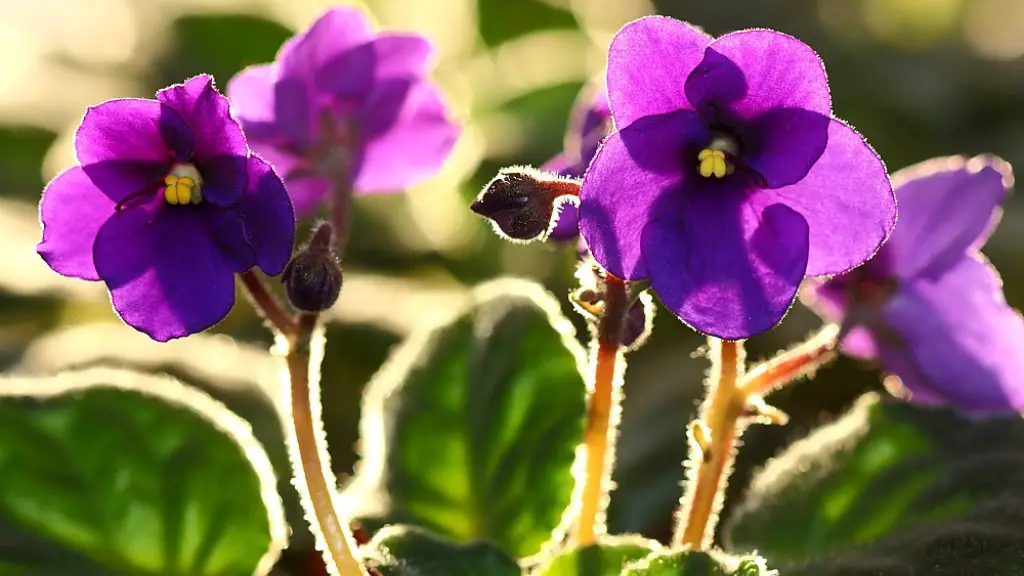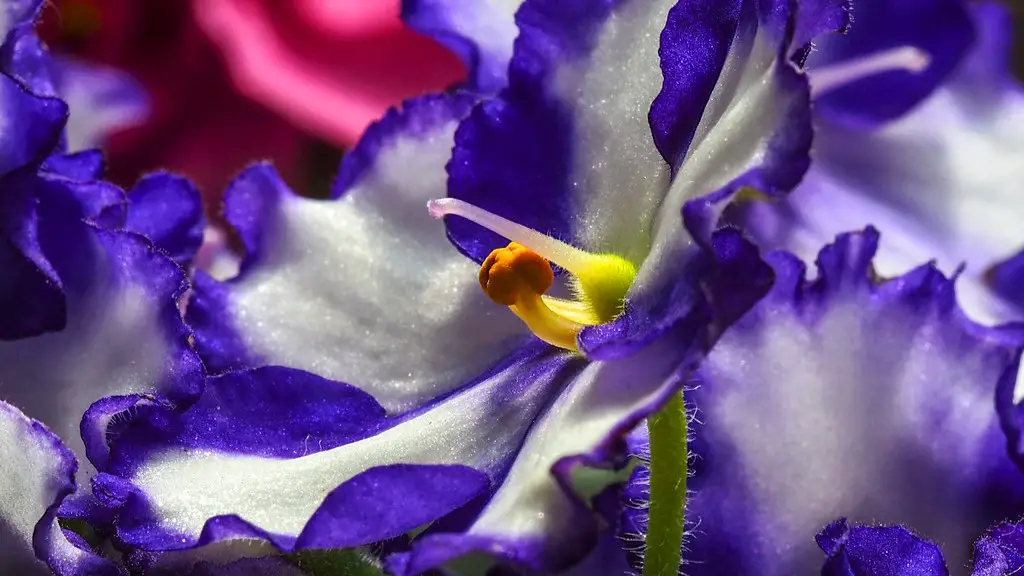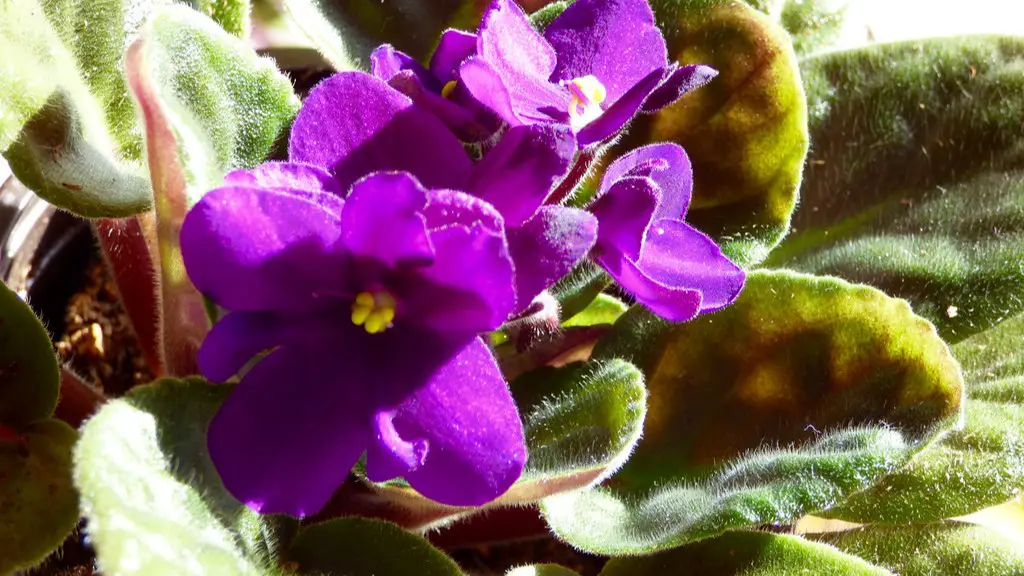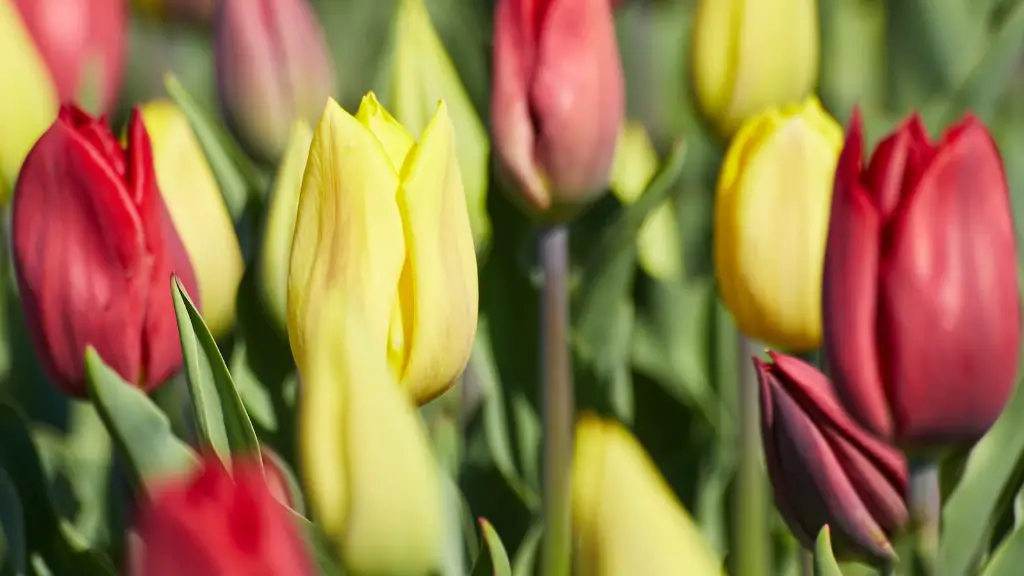African violets are one of the most popular houseplants. They are relatively easy to care for and come in a wide range of colors. While they can be grown in a variety of containers, they do best in pots with a drainage hole. African violets prefer a location with bright, indirect light and moderate humidity.
There are a few things to consider when deciding where to plant your African violets. First, African violets need bright, indirect sunlight. They can tolerate some direct sunlight, but too much direct sunlight will scorch the leaves. Second, African violets need well-draining soil. The soil should also be rich in organic matter. Third, African violets need to be planted in a pot that has drainage holes. fourth, when planting African violets, be sure to plant them at the same depth that they were planted in the pot they came in.
Can you plant African violets in the ground?
African violets are not typically able to survive outdoors. Although they are fairly hardy plants, the conditions need to be just right in order for them to thrive. Since they hail from the rainforests of Tanzania, it is unlikely that your backyard will provide the necessary conditions.
African violets need indirect sunlight in order to thrive. Direct sunlight can actually burn the leaves of the plant, so it’s best to choose a north- or east-facing window for best results. It’s also important to keep plants away from cold glass, and to rotate the pot once a week so all leaves receive light. During winter months, you can extend daylight by placing African violets under a grow light.
What should African violets be planted in
Violets are best planted in an African violet potting mix or any light, loose, fast-draining potting mix that’s 30 to 50 percent perlite or vermiculite. You can mix up your potting soil, too. Keep them planted in small pots and re-pot once a year to give them fresh, nutrient-rich soil.
African violets are delicate plants that prefer bright, indirect light. They should be kept out of direct sunlight to avoid burning their sensitive foliage, and at least a few feet away from bright south- or west-facing windows. An east- or north-facing window gives them the best lighting without the risk of burning. Artificial lighting works well, too.
Do African violets like to be crowded?
African violets are unique plants in that they like to be a little crowded. This means that they can prosper when planted close together, but may start to struggle if the space becomes too tight. In fact, an African violet with too many leaves may withhold its beautiful blooms or stop growing altogether. If you find yourself in this situation, it is best to thin out the leaves to give the plant more room to grow.
African violets are popular houseplants because they are relatively easy to care for. They prefer shallow, breathable pots and don’t have deep roots, so make sure your pot has drainage holes so you can water from underneath. You can also get African Violet specific pots that have a terra cotta sleeve you plant in, and a water reservoir.
Do African violets like bigger pots?
When repotting your African violet, be sure to use a pot that is only slightly larger than the previous one. African violets do best when they are slightly pot-bound, so a pot that is 3-4 inches in diameter is ideal.
Wicking systems help to regulate the amount of water your plants receive, and help to keep the roots from sitting in water which can cause them to rot.
Can you use regular Miracle Grow on African violets
This fertilizer is perfect for African violets and other blooming houseplants. It’s easy to use and will help keep your plants looking beautiful.
African violets and rex begonias are two plants that can easily be propagated from leaf cuttings. To do this, simply take a whole leaf or even just a part of a leaf and place it in a pot of soil. Because detached leaves will quickly wilt, it’s important to have the pot of soil ready before taking the cutting.
How often should you change the soil in African violets?
African violets are a beautiful and popular houseplant, known for their delicate flowers and ease of care. These charming plants are native to Africa and thrive in warm, humid conditions. While they are not difficult to care for, African violets do have some specific needs, one of which is re-potting every six months.
While African violets can technically survive in the same pot for several years, they will flower and grow best if they are given fresh soil every six months. This practice allows the plant to receive a fresh supply of nutrients and also encourages drainage, which is essential for healthy root growth.
If you have an African violet that is starting to look cramped in its pot, or if you notice the leaves beginning to yellow, it is time to re-pot. Simply choose a new pot that is only a few inches larger than the current one and fill it with fresh potting mix. Gently remove the plant from its old pot and place it in the new one, then water well.
With a little bit of care, your African violet will thrive and provide you with beautiful blooms for years to come.
African violets are susceptible to crown rot, so it is important not to saturate the crown (the section of the plant at soil level) with water. Instead, water the plant at the base, taking care not to mist the foliage. Water on the foliage may cause permanent leaf spotting. Use room-temperature water to avoid shocking the plant.
Should African violets be watered once a week
African violets usually only need water when the soil is almost dry. Usually you’ll need to water them about once a week, but this can depend on conditions like the temperature, season, and size of the African violet’s container. The best way to water African violets is by bottom watering.
Fertilizing your African Violet is important to keep the plant healthy throughout the year. During the spring and summer, you should fertilize the plant once every 14 days. In the fall and winter, you shouldn’t fertilize the plant at all to prevent over-fertilizing.
Do African violets need a lot of water?
African Violets need just enough water to keep the soil moist, but never soggy. Too much water will leave your African Violets susceptible to such deadly pathogens as Pythium, Root Rot and Crown Rot.
1. African violets need bright, indirect sunlight to bloom. Keep your plant close to a window, but out of direct sun.
2. African violets prefer high humidity. You can increase the humidity around your plant by setting it on a tray of pebbles and water or by using a humidifier.
3. African violets need to be fertilized regularly with a specific African violet fertilizer. Be sure to follow the instructions on the package.
4. African violets like it to be on the cool side, so keep your plant away from heat sources like vents or fireplaces.
5. African violets need well-drained, loose soil that is high in organic matter. You can purchase African violet potting mix or make your own by mixing equal parts of potting soil, perlite, and vermiculite.
6. African violets are susceptible to pests and diseases. Inspect your plant regularly and remove any pests you see. If your plant becomes infected with a disease, isolate it from other plants andcontact a professional for treatment advice.
7. African violets need to have their roots constricted in order to bloom. This can be done
Final Words
The best place to plant African violets is in a spot that gets indirect sunlight. You also want to make sure that the location you choose has good drainage.
African violets do best in bright, indirect sunlight. They like to be kept moist, but not wet, and need to be fertilized regularly. When planting african violets, be sure to use a pot with drainage holes and a light, well-draining soil.





